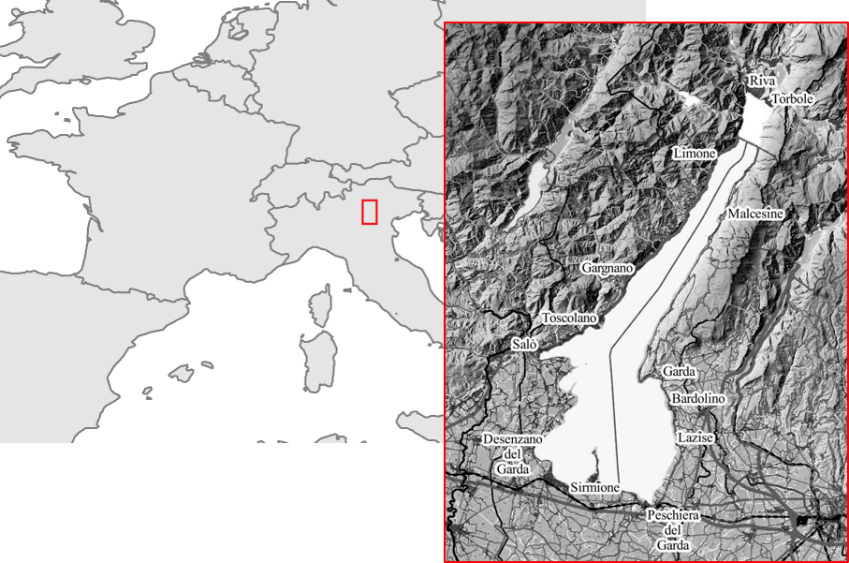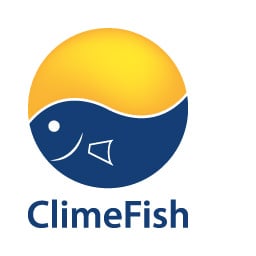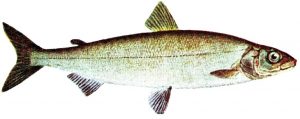Italian Lake Garda

Main results
- Temperature increase in Lake Garda can exceed the optimal levels for several species, leading to decreased growth performance and biomass reduction
- The warmer waters could affect the survival of some life-stages, representing a potential criticality for recruitment
- The severity of the climate induced changes is mediated (attenuated or exacerbated) by the management of fishery
- There are relevant knowledge gaps, that should be filled to move towards a knowledge-based management
- Regular monitoring programs should be established to let the managers regulate fishery and take into account the ongoing changes in the lake.
Effects of climate change
Air temperature change is expected to drive raise temperature in the lake Garda, affecting the growth of the species and the water circulation pattern within the basin. For the whitefish, the most important species for the commercial fishery, a moderate temperature increase could still stimulate individual growth, but severe temperature increases could deteriorate growth performance.
Risks and opportunities
The main risks identified in ClimeFish, through interaction with stakeholders, are related to the state of the stocks. These risks include:
- Decreased natural recruitment for the whitefish
- Decreased biomass for different species
- Decreased productivity in different areas of the lake
- Emergence of invasive species
Risks directly linked to fishing activity include longer winter closure, reduced number of issued licenses and decreased catch efficiency.
Adaptation strategies
The adaptation strategy for the fishery in lake Garda should encompass the adaptation of actions at industry and policy level, and the closure of knowledge gaps. For industry, actions should relate to the adaptation of fishing gears and techniques to account for changed fish distribution (mainly along the depth column). Furthermore, product innovation and marketing strategies are necessary in order to enhance the valorization of the fishery products, either to increase the price or at least avoid devalorization. Regular monitoring of the biological characteristics of the lake and an observatory of the fishing activity (both professional and recreational), should constitute the base for moving toward a knowledge-based management of the resources, that appears to be even more relevant considering the potential impacts of climate change.
Socio-economic outcomes
Predicting the climate’s influence on the evolution of socio-economic aspects of fishery in the lake Garda is difficult. However, the stock size of some of the target species is expected to diminish and the lake’s productivity is expected to decrease. As the relative importance of fishery in the local economy decreased in the last decades, it would be very important that a policy for the valorization of the fish products could support the sustainability of the sector, involving not only the fishery operators but also other activities, such as the tourism industry.

Map of Lake Garda
Italian translation:
Risultati principali
- L’aumento di temperature potrebbe superare i livelli ottimali per diverse specie, causando un peggioramento della crescita e determinando una diminuzione delle rese di pesca
- Il riscaldamento dell’acqua potrebbe influire in particolare su alcuni stadi vitali, mettendo a rischio il reclutamento
- La severità degli effetti climatici dipende dalla gestione dei prelievi, che possono aumentare o smorzare gli impatti negativi
- Nel caso di studio si sono evidenziati alcuni vuoti conoscitivi, che dovrebbero essere colmati per passare ad una gestione delle risorse maggiormente basata sulle evidenze biologiche. Per questo motivo dovrebbero essere stabiliti programmi di monitoraggio regolari e ripetuti nel tempo.
Effetti dei cambiamenti climatici
Il cambiamento della temperatura dell’aria determina un aumento della temperatura dell’acqua del lago, influenzando il ricircolo nel bacino e la crescita di diverse specie. Per quanto riguarda il coregone lavarello, la specie più importante per la pesca professionale, un aumento moderato di temperatura potrebbe ancora stimolare la crescita, ma un più marcato aumento di temperatura, potrebbe portare ad una diminuzione della biomassa della risorsa.
I rischi e le opportunità
I rischi più rilevanti, evidenziati grazie all’interazione con i portatori di interesse, sono legati allo stato degli stock (decremento del reclutamento naturale del coregone; decremento delle biomasse per diverse specie; decremento di produttività per diverse aree del lago; aumento della presenza di specie invasive) e alle attività di pesca (periodi di chiusura più estesi; numero di licenze; diminuzione dell’efficienza di cattura)
Principali strategie di adattamento
La strategia di adattamento per il lago di Garda, dovrebbe passare attraverso l’adozione di azioni a livello dei professionisti della pesca, a livello gestionale e colmando alcuni gap conoscitivi. Potrebbe essere necessario modificare gli attrezzi di pesca per tener conto di una diversa distribuzione e comportamento dei pesci, e andrebbe fatto uno sforzo per incrementare il potenziale di valorizzazione dei prodotti della pesca (innovazione del prodotto e strategie di marketing) per incrementare il prezzo dei prodotti o, almeno, contrastarne il declino. Uno monitoraggio biologico regolare e un osservatorio sulle attività di pesca professionale e dilettantistica, dovrebbero, inoltre, rappresentare la base per passare ad una gestione basata sulle conoscenze, che sia in grado di rispondere rapidamente ai cambiamenti che si presenteranno in futuro.
Conseguenze socio-economiche
Non è semplice prevedere l’effetto del cambiamento climatico sugli aspetti socio-economici della pesca nel lago di Garda. Comunque, la biomassa di alcune specie sfruttate è prevista subire un calo a causa delle temperature, e la produttività biologica del lago segue una tendenza in diminuzione. Dal momento che la rilevanza del settore nell’economia locale è diminuita nelle ultime decadi, sarebbe importante implementare una politica di valorizzazione dei prodotti ittici locali che interagisca anche con altre attività (come ad esempio il turismo), in modo da supportare la sostenibilità economica della pesca.


